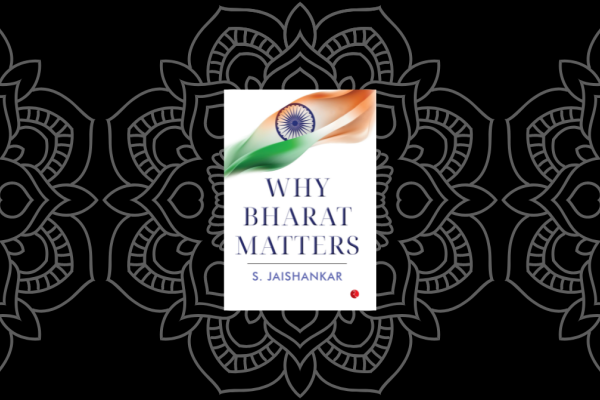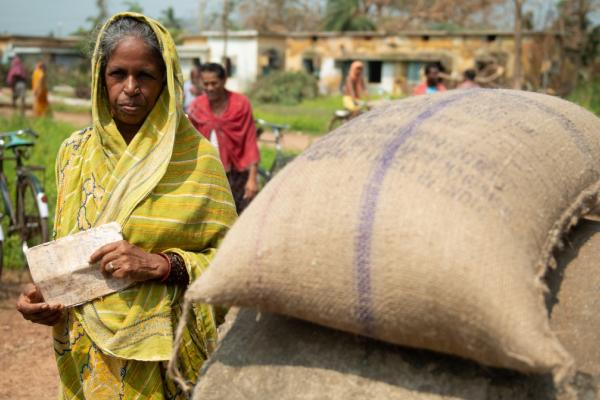This book, its title and its contents, immediately raise three unanswered, perhaps unanswerable, questions. First, what is it that prompted a well-known specialist in European history, with no training in Indian history and Indian philosophy, to jump into writing an account of the career of a major Indian religious figure? Does the author think that writing about Indian religious, spiritual and social ideas requires no background training and language skills? Would she or Harvard University Press allow an Indian scholar to investigate the ideas and career of a leading European/Christian figure without adequate background training and language skills?
In this context, it is ironic that as an epigraph to the "Introduction", Ruth Harris offers Sister Nivedita (Margaret Noble) who wrote, "Nothing is more difficult to disentangle than the history of a definite religious idea." Fully aware of this warning, Harris has rushed in.
Questioning the author’s language skills is imperative because I see no evidence in this book to show that Ruth Harris knows or is fluent in Bengali, which was Vivekananda’s mother-tongue and thus the language in which he most frequently wrote and spoke. There is, moreover, an enormous amount of secondary literature in Bengali on Vivekananda – his life, his spiritual quest and the influence he has had and continues to have. Ruth Harris does not seem to have even dipped into this material. Does she compensate this lack by the knowledge of Sanskrit philosophical traditions from which Bengali religious thinkers so often draw? Surprisingly, the answer once again is "No", making her rather ill-equipped to adequately grasp and address some of the philosophical and spiritual ideas she raises in the book. Any scholar lacking the primary language skills deemed essential for tackling her subject is starting off with a serious drawback, which cannot but make her book woefully inadequate and presumptuous.
The title, unless it’s a publisher’s gimmick, is also puzzling. By what reckoning is Vivekananda "guru to the world"? How many people, outside those interested in India and Hinduism know of him, his work and ideas? In fact, how many Indians, let alone the world, consider him their guru? What does the title mean or imply for, how can an individual be guru to the world, unless the world is defined as a small group of people in North America which seems to be Harris’s universe?
The title, unless it’s a publisher’s gimmick, is also puzzling. By what reckoning is Vivekananda "guru to the world"?
Narendranath Datta – later to be renowned as Vivekananda, the name he took as a monk – was in his youth a rationalist and a member of the Brahmo Samaj which did not believe in idol worship and advocated the reform of orthodox Hindu society. But he saw the mystic and Kali worshipper, Ramakrishna, as the pivotal influence of his life. Harris detects a paradox here and suggests that there was a great deal of fluidity in the religious and spiritual milieu of late 19th century Calcutta. To locate a paradox here is, however, a bit of an exaggeration. The lives of Ramakrishna and his pre-eminent disciple, Vivekananda, are inextricably intertwined. Vivekananda openly and on innumerable occasions, acknowledged Ramakrishna as his "master", the individual who had dramatically changed the trajectory of his life.
Through his own narration of a vision he had, Ramakrishna had placed himself as the herald of Vivekananda. In this vision, oddly not picked up by Harris, Ramakrishna saw seven sages who were formed by the light of pure consciousness. These sages were in samadhi (ecstatic trance) and as Ramakrishna watched, out of the undifferentiated light a child emerged. This child threw its arms around the neck of one of the sages and tried to arouse him from his samadhi. When at last the sage woke up, his face shone with happiness. The child told the sage, "I am going down there, and you must come with me." The sage did not answer and went into samadhi again and then Ramakrishna saw an emanation of the sage going down to earth in the form of a bright light. After describing this vision, Ramakrishna added "Hardly had I set eyes on Naren for the first time when I knew he was that sage." When the disciples questioned him, Ramakrishna admitted that the child in the vision had been none other than he himself. Ramakrishna further added he had confirmation Naren (as Ramakrishna always called him) as the sage when he had questioned Naren while the latter had lost consciousness after Ramakrishna had touched him in a garden house south of the Dakshineswar compound. 1The vision is narrated in Christopher Isherwood, Ramakrishna and his Disciples, Calcutta, Advaita Ashrama, 1974, 3rd edn., p.199.
One does not have to be a devotee to understand the significance of the story: Ramakrishna saw himself as the companion responsible for bringing the sage Vivekananda among the mortals. This narrative also helps understand the ineffable joy that Ramakrishna felt whenever he saw Naren. I think without this anecdote a very important dimension of the Ramakrishna-Vivekananda relationship remains unsaid even after Harris has rejected the usual tropes that are supposed to complement and explain apparent contraries – "childlike illiterate visionary" (Ramakrishna) and "muscular, energetic, and rationalist representative of a new and reformist generation" (Vivekananda); feminine (Ramakrishna) and masculine (Vivekananda); a shakti (Kali) worshipper, a Vaishnava, Tantric, interested in Puranas (Ramakrishna) and a "jnani who stressed the ancient wisdom of the Upanishads and the ethical flights of the Bhagavad Gita" (Vivekananda).
Ramakrishna saw himself as the companion responsible for bringing the sage Vivekananda among the mortals.
Harris’s emphasis on the rationalist and Brahmo Vivekananda is made at the cost of ignoring certain interesting pieces of evidence. First, Naren’s grandfather, Durgacharan, who Naren resembled physically, had left his family and home to become a monk. Second, from a very early age, Naren had displayed a strange fascination for wandering monks and ascetics.
Third, this is what he himself wrote about his early spiritual orientation:
From the earliest times that I can remember, I used to see a marvellous point of light between my eyebrows as soon as I shut my eyes to go to sleep, and I used to watch its various changes with great attention…That marvellous point of light would change colours and get bigger and bigger until it took the form of a ball; finally it would burst and cover my body from head to foot with white liquid light. As soon as that happened, I would lose outer consciousness and fall asleep I used to believe that that was the way everybody went to sleep. Then, when I grew older and began to practice meditation, that point of light would appear to me as soon as I closed my eyes, and I’d concentrate upon it. At that time, I was practicing meditation with a few friends…We told each other about the visions and experiences we had had. And that was how I found out that none of them had ever seen that point of light or gone to sleep in that way. (Isherwood, 1974, 3rd edition, p. 188).
Fourth, to take another more telling recollection from Naren:
Every night when I went to bed two ideals of life appeared before me. One of them was to be a man of great wealth, surrounded by servants and dependants and enjoying high rank and immense power. I saw myself as foremost among the great men of the world; and I certainly had the necessary ability in me to fulfil that ambition. But then, the very next moment, I would picture myself as having renounced everything in the world. I was wearing nothing but a loin cloth, eating without anxiety whatever food came my way, sleeping under a tree and living in complete reliance on God’s will. I knew it was within me to lead this life of the sages and ascetics, if I should choose to do so. These two pictures of the two directions in which I could bend my life kept appearing before me; but I always ended by choosing the latter. I knew that this was the only path by which a man could achieve true happiness, and I resolved to follow it and not the other. As I dwelt on the happiness of such a life, my mind would become absorbed in God and I would fall asleep (ibid., p,190).
It would be simplistic to conclude from these pieces of evidence that Naren’s journey to Dakshineswar was preordained. But they do help to explain Naren’s receptivity to the two initial moments of epiphany he experienced with Ramakrishna: first, when the latter put his foot on Naren’s body and the second, as already mentioned, in the garden house.
Harris is much too concerned with Vivekananda’s success and attainments in North America to adequately capture his spiritual quest which indubitably began with Ramakrishna in the compound of a temple.
Harris, because she is too narrowly focused on how Vivekananda became "a guru to the world", rather seriously underplays the Ramakrishna-Naren relationship. Without the latter’s training as a sadhak under the tutorship of Ramakrishna in Dakshineswar, it is impossible to fathom the manner of his self-fashioning after his master’s passing. To take two examples from Harris’s own text. She highlights Vivekananda’s evocation of what she calls the "divine feminine". This form of spirituality Naren imbibed from Ramakrishna and from no one else. It was embedded in his training at Dakshineswar. Similarly, he took from his master the diversity of religious beliefs, all of them representing multiple vistas to one God. It was this idea acquired from his guru -- a rustic mystic -- that Vivekananda articulated in his unforgettable Chicago address which propelled him into the limelight. Harris is much too concerned with Vivekananda’s success and attainments in North America to adequately capture his spiritual quest which indubitably began with Ramakrishna in the compound of a temple.
A large part of Harris’ book is about Vivekananda in North America and her reconstruction of this aspect is rich in detail and captures the impact he had on sections of Americans who had never encountered an Indian religious figure before. Vivekananda enthralled some Americans especially women, because he was a remarkable individual with a phenomenal memory, an incredible power of reading and comprehension; he was erudite, with a rare gift of public speaking and exotic in dress and appearance.
He articulated in his speeches and in his in camera conversations a spirituality and religious message that the West had not heard but was obviously eager to hear. The transmission of the Indian spiritual tradition – or at least some aspects of it – is only one part of the legacy of Vivekananda. Harris thinks it is the most important part since it is this legacy which supposedly elevated him to be "guru to the world".
There is another legacy which most people, at least in India, think is much more relevant. After his return from the West in early 1897, Vivekananda and his fellow monk and old friend Rakhal took on the task of organizing a monastic order that would be dedicated to providing service to the really needy. Harris mentions Vivekananda’s commitment to seva but does not dwell on how he and Rakhal gave the idea practical shape. (Harris says Vivekananda "coined" the term daridra narayan. The term and the idea conveyed by it had, in fact long existed in the Indian spiritual tradition. Vivekananda retrieved it and gave it greater salience.)
The Ramakrishna Mission, the embryo of which Vivekananda saw before his untimely death, through its activities in public health, education and relief work carries forward what Vivekananda had conceived. This is his most lasting legacy even if it deviates from Ramakrishna’s dictum (quoted by Harris) to his disciples: "You must always remember, in whatever you do, that the aim of human life is to attain God, not to build hospitals and dispensaries." Harris offers no explanation for this departure of Vivekananda from "my master". However, there is this following piece of evidence to consider. In 1884, Ramakrishna was explaining to a group – Naren was present – the religious practices of Vaisnavas to which, according to Ramakrishna, compassion to all beings (sarve jive daya) was crucial. After uttering this phrase, he went into samadhi. When he came out of that state he said, "How foolish to speak of compassion! Human beings are as insignificant as worms crawling on the earth – and they are to show compassion to others? That’s absurd. It must not be compassion, but service to all. Serve them, knowing that they are all manifestations of God (sivajnane jiver seva)." 2Swami Saradananda, Sri Sri Ramakrishna Lila Prasanga, 2 vols., Kolkata, Udbodhan, 2009. Originally published in 1909-19. The English translation by Swami Chetanananda is titled Sri Ramakrishna and His Divine Play, St. Louis, Vedanta Society of St Louis, 2003. In the Bengali text the incident is given in vol 2, p.131; in the English version on p. 852. It would not be a far-fetched to conclude that from such lessons Vivekananda derived his mission of service.
The Ramakrishna Mission… is his [Vivekananda’s] most lasting legacy even if it deviates from Ramakrishna’s dictum (quoted by Harris) to his disciples…
No book is without blemish. Even a Fellow of All Souls nods, sometimes even more than Homer. The more egregious of these errors need to be pointed out in a book of this kind, published by Harvard University Press. The name of Mirabehn was Madeleine (not Margaret as mentioned on p.519n10); the correct name is Rakhal Chandra Ghosh (not Gosh as is mentioned on p.431.); and on p.28 it is stated that "the General Assembly Institution (now known as the Scottish Church College), the oldest liberal arts and sciences college in India", whereas the Hindu College, established 1817, preceded the founding of the General Assembly Institution by more than a decade and pioneered the teaching of western knowledge (arts and sciences) in Calcutta.
Errors of this kind are enough to embarrass an undergraduate. I dare not think what it does to a professor of history at my alma mater.
Rudrangshu Mukherjee is Chancellor and Professor of History, Ashoka University.









